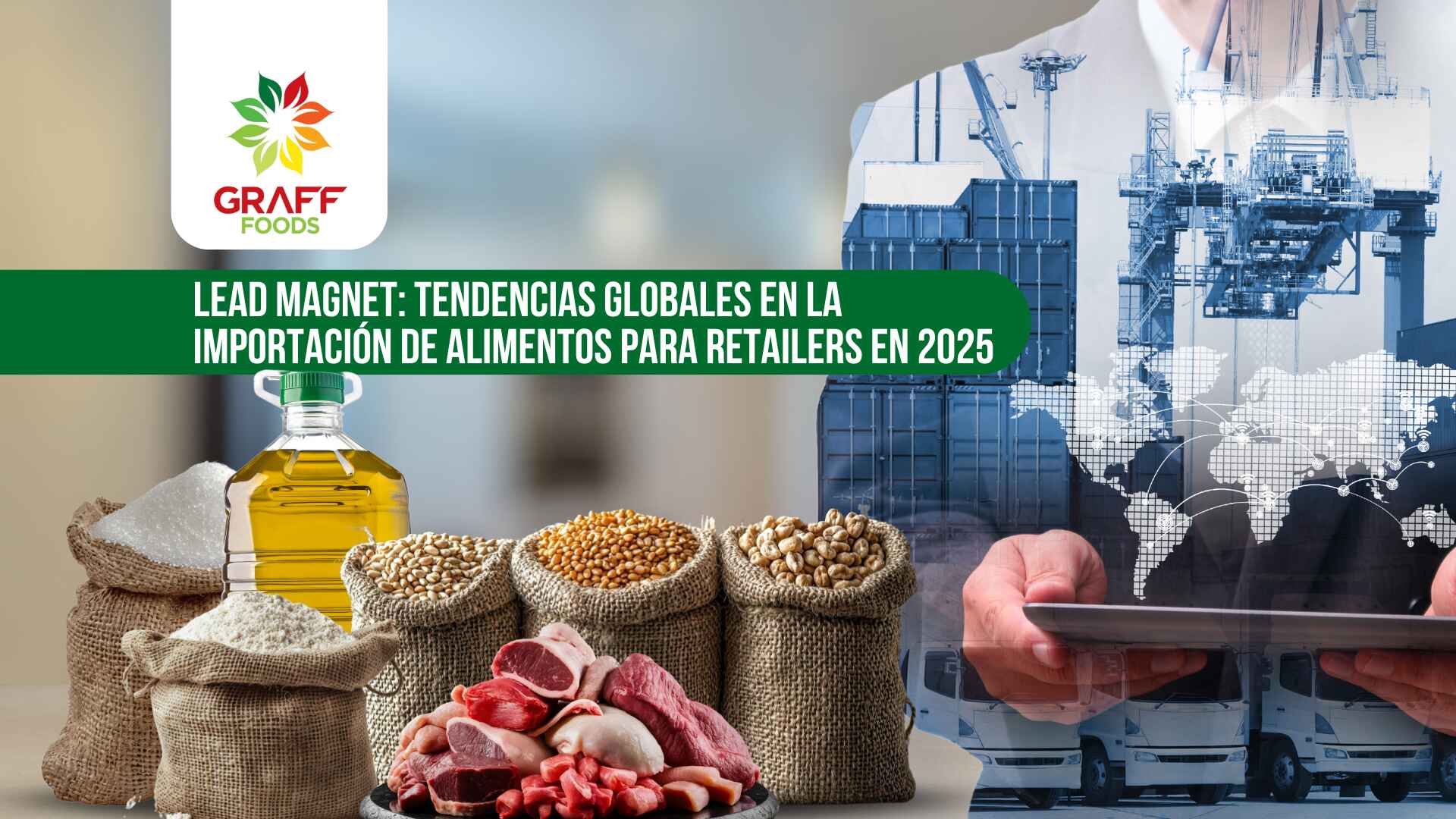Introduction: The Evolution of Global Food Trade in 2025
The global food trade is undergoing constant transformation. In recent years, factors such as population growth, shifting consumer preferences, and the digitalization of supply chains have redefined how retailers import and distribute food products.
By 2025, global food imports are projected to exceed $2 trillion, with an estimated annual growth rate of 2.5%. This outlook presents both opportunities and challenges for supermarkets, wholesalers, and food distributors, who must adapt their strategies to remain competitive in an increasingly demanding market.
This article outlines some of the most relevant trends that will shape global food importsFor a deeper dive with data-driven insights, forecasts, and supply chain optimization strategies, we invite you to download our exclusive report.
Key Trends in Food Imports for 2025

1. Growing Demand for Healthy and Sustainable Products
Today’s consumers have significantly shifted their purchasing habits, prioritizing natural, organic products with quality certifications. This trend will continue growing into 2025, driving major changes in food import patterns.
Retailers will need to ensure the availability of clean-label products—those free from artificial additives and produced responsibly. Traceability and sustainability certifications will be critical in selecting suppliers and building consumer trust.
This shift in demand will directly impact global food importsrequiring importers to adapt their product portfolios and partner with suppliers that meet these evolving standards.
2. Supply Chain Digitalization and Logistics Efficiency
Supply chain optimization is a top priority for food importers and distributors. Leveraging technologies like artificial intelligence and blockchain for inventory management, traceability, and regulatory compliance will help cut costs and boost operational efficiency.
Major retailers are already adopting predictive tools to anticipate demand and prevent stockouts. Likewise, automation in global food imports will streamline compliance with food safety regulations and shorten delivery times, enhancing competitiveness across the sector.
3. Expansion of Global Trade and Supplier Diversification
Food import flows are undergoing a significant shift in terms of source and destination markets. Trade agreements among Asia, Europe, and Latin America are accelerating bilateral commerce, creating new opportunities for importers and distributors.
In this context, diversifying supplier networks will be essential to ensuring a stable supply and mitigating risks related to economic fluctuations and tighter trade regulations. Emerging markets in Latin America and Africa also present strong growth opportunities driven by rising demand for imported foods.
To remain competitive in global food imports, wholesalers must stay alert to these dynamics and refine their sourcing strategies to maintain a diversified and resilient supply chain.
4. Stricter Regulations and Rising Sustainability Standards
Food safety, labeling, and sustainability regulations are becoming increasingly rigorous, particularly in markets like the European Union and the United States. By 2025, importers must comply with stricter traceability, origin certification, and environmental standards.
Companies that proactively adapt to these regulatory shifts will position themselves as market leaders, gaining a competitive edge over those that have yet to fully integrate compliance strategies into their global food imports.
Conclusion: Stay Ahead with Strategic Insights
The global food imports will be defined by digital transformation, rising demand for health-conscious products, expanding global trade, and evolving sustainability regulations. For wholesalers, distributors, and retailers, anticipating these changes is crucial to maintaining competitiveness and ensuring a reliable food supply.
At Graffoods, we are committed to helping our partners optimize their global food imports. Our exclusive report provides in-depth industry data, market analysis, and actionable strategies to support informed decision-making and strengthen your position in a constantly evolving global market.
Download the full report now and gain access to strategic insights to elevate your 2025 food import operations

